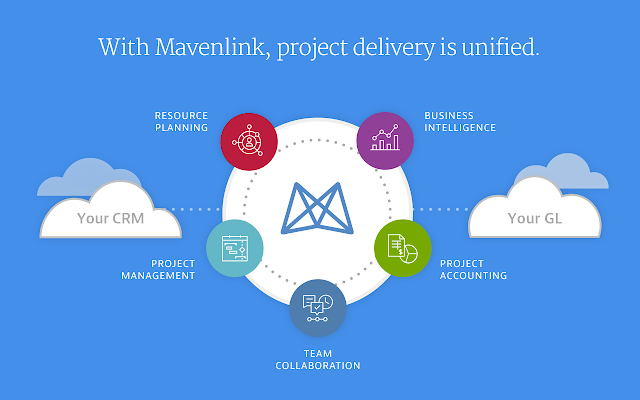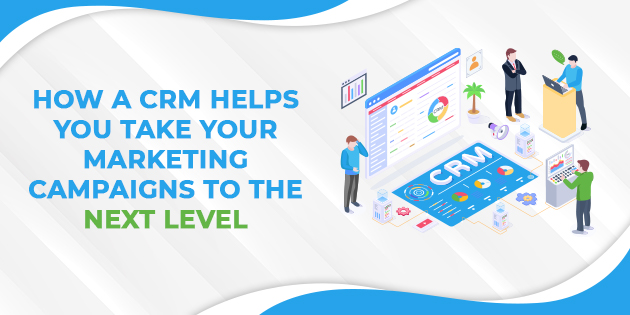CRM Marketing Metrics: Your Ultimate Guide to Measuring Success and Boosting ROI
In the dynamic world of marketing, data is king. And when it comes to understanding your customers and optimizing your strategies, Customer Relationship Management (CRM) systems are the crown jewels. But simply having a CRM isn’t enough. You need to know how to measure its effectiveness. That’s where CRM marketing metrics come in. This comprehensive guide will walk you through the essential metrics, helping you understand what to track, how to interpret the data, and ultimately, how to use it to drive significant improvements in your marketing ROI.
Why CRM Marketing Metrics Matter
Before diving into specific metrics, let’s establish why they’re so crucial. CRM marketing metrics provide a quantifiable way to assess the performance of your marketing efforts. They allow you to:
- Track Progress: Monitor the effectiveness of your campaigns and identify areas for improvement.
- Make Data-Driven Decisions: Base your marketing strategies on concrete evidence rather than guesswork.
- Optimize ROI: Maximize the return on your marketing investments by focusing on what works.
- Understand Customer Behavior: Gain insights into customer preferences, needs, and pain points.
- Improve Customer Experience: Personalize interactions and provide a more relevant and engaging experience.
Without these metrics, you’re essentially flying blind. You might be pouring resources into campaigns that aren’t generating results, missing opportunities to connect with your audience, and ultimately, hindering your business growth. Measuring your CRM marketing metrics is not just a good practice; it’s a necessity for any business striving for sustainable success.
Key CRM Marketing Metrics to Track
The landscape of CRM marketing metrics is vast, but focusing on a core set of key indicators will provide the most valuable insights. Here are some of the most important metrics to monitor:
1. Customer Acquisition Cost (CAC)
What it is: The total cost of acquiring a new customer. This includes all marketing and sales expenses, such as advertising costs, salaries, and software subscriptions, divided by the number of new customers acquired during a specific period.
Why it matters: CAC is a fundamental metric for understanding the efficiency of your marketing and sales efforts. It helps you determine how much it costs to gain a new customer and assess the profitability of your customer acquisition strategies.
How to calculate it: (Total Marketing & Sales Expenses) / (Number of New Customers Acquired)
Example: If your total marketing and sales expenses for a month are $10,000 and you acquire 50 new customers, your CAC is $200.
2. Customer Lifetime Value (CLTV)
What it is: A prediction of the net profit attributed to the entire future relationship with a customer.
Why it matters: CLTV provides a long-term view of customer profitability. It helps you understand the value of each customer and make informed decisions about customer retention and loyalty programs. Knowing your CLTV allows you to determine how much you can spend on acquiring and retaining customers.
How to calculate it: There are various formulas for calculating CLTV, but a simplified version is: (Average Purchase Value) x (Number of Purchases per Year) x (Average Customer Lifespan)
Example: If a customer spends an average of $100 per purchase, makes 5 purchases per year, and remains a customer for 3 years, their CLTV is $1500.
3. Conversion Rate
What it is: The percentage of leads who convert into customers. This can be measured at different stages of the sales funnel, such as website visitors to leads, leads to qualified leads, and qualified leads to customers.
Why it matters: Conversion rate is a direct measure of the effectiveness of your marketing and sales processes. It highlights areas where you’re losing potential customers and helps you identify opportunities to improve your sales funnel.
How to calculate it: (Number of Conversions) / (Total Number of Visitors or Leads) x 100%
Example: If 100 leads convert into 10 customers, your conversion rate is 10%.
4. Customer Churn Rate
What it is: The percentage of customers who stop doing business with your company during a specific period.
Why it matters: Churn rate is a critical indicator of customer satisfaction and loyalty. High churn rates can significantly impact your revenue and growth. It’s generally more expensive to acquire a new customer than to retain an existing one, so reducing churn is a priority.
How to calculate it: (Number of Customers Lost During Period) / (Number of Customers at the Beginning of Period) x 100%
Example: If you lose 10 customers from a starting base of 100 customers in a month, your churn rate is 10%.
5. Return on Investment (ROI)
What it is: A measure of the profitability of your marketing investments. It shows the percentage return you receive on your marketing spend.
Why it matters: ROI is the ultimate measure of marketing effectiveness. It allows you to justify your marketing budget and demonstrate the value your marketing efforts bring to the business. It helps you to understand which campaigns are performing best and where to allocate your resources.
How to calculate it: ((Revenue Generated – Cost of Investment) / Cost of Investment) x 100%
Example: If you spend $10,000 on a marketing campaign and generate $20,000 in revenue, your ROI is 100%.
6. Website Traffic and Lead Generation
What it is: The number of visitors to your website and the number of leads generated through your website and other marketing channels.
Why it matters: Website traffic and lead generation are essential metrics for understanding the effectiveness of your online marketing efforts. They indicate the reach and visibility of your brand and the ability of your marketing campaigns to attract potential customers. They are fundamental to the top of your sales funnel.
How to measure it: Track website traffic using tools like Google Analytics. Monitor lead generation through your CRM and marketing automation platforms.
Example: Track your website traffic, the number of form submissions, and the number of leads that come from each marketing channel.
7. Email Marketing Metrics
What it is: Metrics related to your email marketing campaigns, such as open rates, click-through rates, and conversion rates.
Why it matters: Email marketing is a powerful tool for nurturing leads and driving conversions. These metrics help you assess the engagement and effectiveness of your email campaigns and identify areas for improvement.
How to measure it: Most CRM and email marketing platforms provide detailed analytics on these metrics.
Example: Monitor your open rates, click-through rates, and conversion rates for each email campaign. A/B test different subject lines and content to optimize your results.
8. Sales Cycle Length
What it is: The average time it takes for a lead to become a customer.
Why it matters: Sales cycle length provides insight into the efficiency of your sales process. A shorter sales cycle typically indicates a more effective sales process and can lead to increased revenue.
How to calculate it: (Total Time for all Closed Deals) / (Number of Closed Deals)
Example: If the total time for all closed deals is 60 days and the number of closed deals is 10, the sales cycle length is 6 days.
9. Lead Response Time
What it is: The time it takes for a sales representative to respond to a lead.
Why it matters: Prompt lead response is critical for converting leads into customers. Research shows that responding to leads quickly can significantly increase conversion rates. A quick response demonstrates that you value your leads and are ready to help them.
How to measure it: Your CRM system can track the time between lead creation and the first contact from a sales representative.
Example: Aim for a lead response time of within 5 minutes.
10. Customer Satisfaction (CSAT) and Net Promoter Score (NPS)
What it is: CSAT measures customer satisfaction with a specific interaction, while NPS measures the likelihood of a customer recommending your company to others.
Why it matters: CSAT and NPS provide valuable insights into customer loyalty and satisfaction. They help you understand how customers perceive your brand and identify areas for improvement in your customer service and overall experience.
How to measure it: Use surveys and feedback forms to collect CSAT and NPS data.
Example: Send a CSAT survey after a customer service interaction. Calculate NPS based on customer responses to the likelihood of recommending your company.
How to Use CRM Marketing Metrics to Improve Your Strategies
Tracking these metrics is only the first step. The real value lies in analyzing the data and using the insights to refine your marketing strategies and drive better results. Here’s how to leverage your CRM marketing metrics:
1. Set Clear Goals and Objectives
Before you start tracking metrics, define your goals. What do you want to achieve with your marketing efforts? Are you trying to increase leads, boost conversions, or improve customer retention? Having clear objectives will guide your metric selection and analysis.
2. Choose the Right Metrics
Select the metrics that align with your goals. Don’t try to track everything at once. Focus on the most relevant metrics that will provide the most valuable insights for your business. Prioritize the metrics that will help you measure your progress towards your objectives.
3. Establish Baselines and Benchmarks
Before implementing changes, establish baselines for your key metrics. This will allow you to measure the impact of your efforts. Research industry benchmarks to see how your performance compares to your competitors.
4. Analyze the Data Regularly
Don’t just collect data; analyze it regularly. Look for trends, patterns, and anomalies. Identify what’s working and what’s not. Use data visualization tools to make it easier to understand complex data sets.
5. Iterate and Optimize
Use the insights from your data analysis to make improvements to your marketing strategies. Test different approaches, track the results, and make further adjustments as needed. This iterative process of analysis, testing, and optimization is key to continuous improvement.
6. Segment Your Data
Segment your data by customer demographics, behavior, and other relevant factors. This will allow you to gain more specific insights and tailor your marketing efforts to different customer segments. Segmenting your data allows you to understand the nuances of your customer base.
7. Integrate CRM with Other Tools
Integrate your CRM with other marketing tools, such as email marketing platforms and website analytics tools, to get a more holistic view of your marketing performance. This integration will allow you to connect the dots between different marketing activities and their impact on your results.
8. Provide Training and Support
Ensure your marketing and sales teams are trained on how to use the CRM and understand the key metrics. Provide them with the tools and support they need to analyze the data and make data-driven decisions.
9. Automate Reporting
Automate your reporting processes to save time and ensure consistency. Most CRM systems offer reporting dashboards and automation capabilities.
10. Seek External Expertise
Consider seeking advice from marketing consultants or agencies if you need help analyzing your data or developing your marketing strategies. They can provide valuable insights and guidance based on their experience.
Tools for Tracking CRM Marketing Metrics
Several tools can help you track and analyze your CRM marketing metrics. Here are some of the most popular:
- CRM Systems: Salesforce, HubSpot, Zoho CRM, Microsoft Dynamics 365
- Marketing Automation Platforms: Marketo, Pardot, ActiveCampaign
- Website Analytics Tools: Google Analytics, Adobe Analytics
- Email Marketing Platforms: Mailchimp, Constant Contact, Sendinblue
- Data Visualization Tools: Tableau, Power BI, Google Data Studio
These tools provide the functionality to gather, analyze, and visualize your data. Selecting the right tools will depend on your budget, your specific needs, and the size of your business.
Common Challenges and How to Overcome Them
Tracking CRM marketing metrics can present some challenges. Here are some common hurdles and how to address them:
1. Data Accuracy
Challenge: Inaccurate data can lead to misleading insights and poor decision-making. Data entry errors, inconsistent data formats, and incomplete data can all contribute to inaccurate data.
Solution: Implement data validation rules, train your team on proper data entry practices, and regularly audit your data to ensure accuracy.
2. Data Silos
Challenge: Data silos occur when data is stored in separate systems and not integrated. This can make it difficult to get a holistic view of your marketing performance.
Solution: Integrate your CRM with other marketing tools and platforms to create a unified view of your customer data. Use data integration tools to automate the data transfer process.
3. Lack of Resources
Challenge: Tracking and analyzing CRM marketing metrics can require time, expertise, and resources. Smaller businesses may lack the resources to dedicate to these tasks.
Solution: Start with a small set of key metrics and gradually expand your tracking efforts. Consider outsourcing some tasks to marketing consultants or agencies. Utilize the free features of various tools before investing in paid versions.
4. Resistance to Change
Challenge: Some team members may be resistant to adopting a data-driven approach to marketing. They may be comfortable with existing practices and reluctant to change.
Solution: Communicate the benefits of using metrics to improve marketing performance. Provide training and support to help team members understand how to use the data. Involve team members in the process to gain their buy-in.
5. Information Overload
Challenge: Tracking too many metrics can lead to information overload. It can be difficult to focus on the most important data and make sense of the information.
Solution: Focus on a core set of key metrics that align with your goals. Don’t try to track everything at once. Regularly review your metrics and eliminate those that aren’t providing valuable insights.
Conclusion: Embrace the Power of Data
CRM marketing metrics are essential for measuring the success of your marketing efforts and optimizing your ROI. By tracking the right metrics, analyzing the data, and making data-driven decisions, you can gain valuable insights into your customers, improve your marketing strategies, and drive significant business growth. Embrace the power of data and transform your marketing from guesswork to a strategic, results-driven approach. The journey to marketing success starts with understanding the numbers, so start tracking your metrics today!


